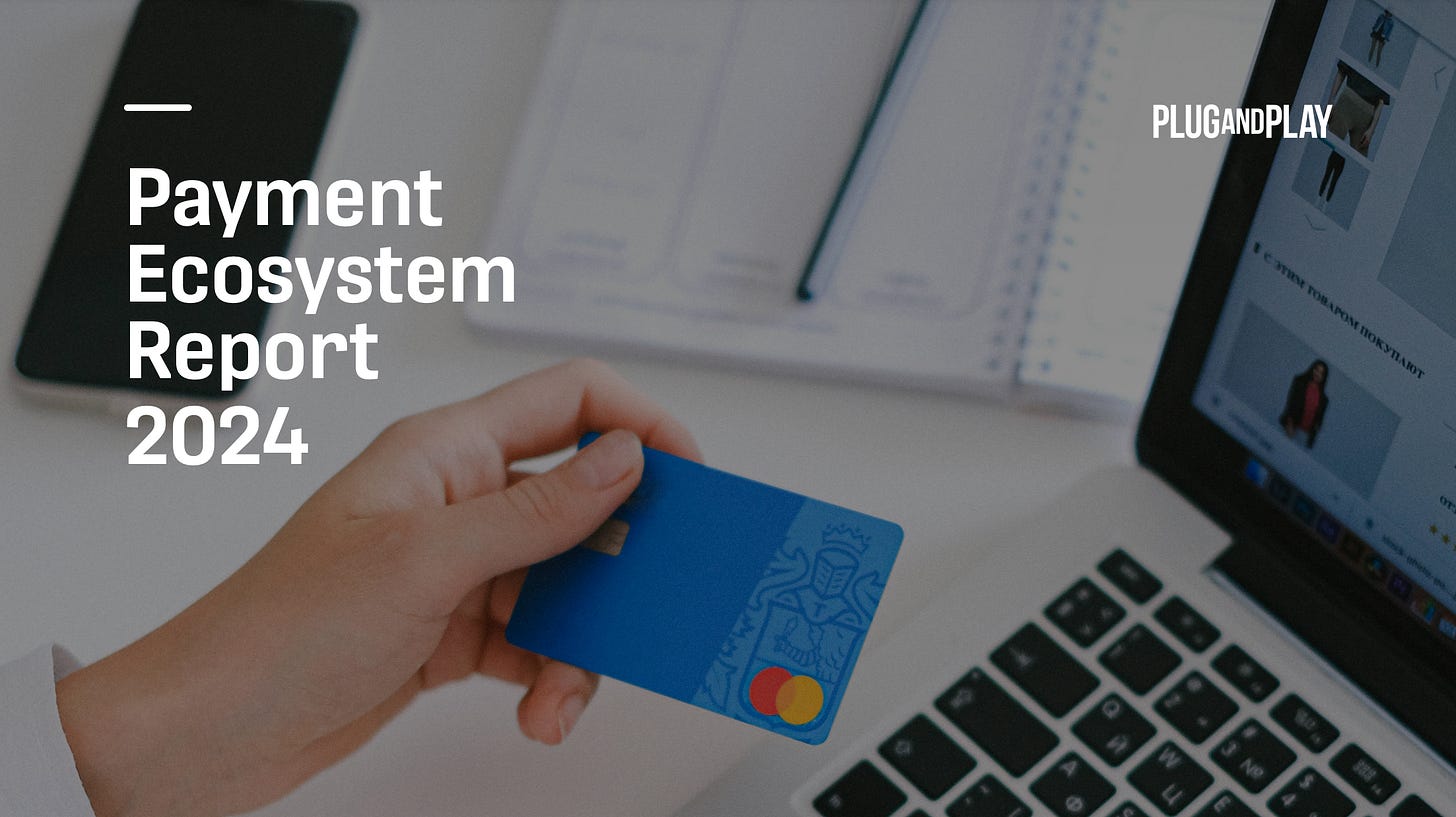Payment Ecosystem Report 2024
by Salim Laouiti, Ventures Associate at Plug and Play. | Originally published on Plug and Play.
Guest post by Salim Laouiti, Ventures Associate at Plug and Play. | Originally published on Plug and Play.
Delve into the evolving payment ecosystem, providing valuable insights into the current state, key players, emerging trends, and the future of payments. By downloading this report, you’ll gain a deeper understanding of the factors shaping the payment landscape, including customer demand for convenience, security, and speed, intensified competition, rapid technological advancements, and evolving regulations.
What to expect?
Discover the shift in payment methods with alternative solutions like Buy Now, Pay Later (BNPL), which are leading the charge as the fastest-growing payment method.
Explore how account-to-account (A2A) payments and biometrics challenge cards, enhancing security and efficiency, as mobile wallets rise and account for 45% of e-commerce transactions.
Explore the evolving role of cryptocurrency in payments, highlighted by El Salvador’s adoption of Bitcoin as legal tender and its growth since 2009.
Key takeaways.
Dominance of Alternative Payment Solutions: Buy now, pay later (BNPL), which is still the fastest-growing method.
Competitive Payment Solutions: The traditional dominance of card payments is being challenged by new technologies such as account-to-account (A2A) payments, real-time payment systems, and innovative solutions like biometric payments and BNPL services. These advancements are transforming the payment landscape, making transactions more secure, efficient, and user-friendly.
Cryptocurrency Evolution: Cryptocurrency as a payment method has seen substantial development since the release of Bitcoin in 2009. Major milestones include the introduction of smart contracts with Ethereum in 2015, the launch of the Lightning Network in 2018, and El Salvador adopting Bitcoin as legal tender in 2021.
E-Commerce Growth: This means continuing to make the payment experience even more convenient. The payment industry is influenced by several key factors, including customer demand for convenient, fast, and secure payments, intensifying competition from tech and fintech companies, rapid technological advancements, and evolving regulations promoting financial inclusion and consumer protection.
The current state of payments.
In its most common definition, payment refers to transferring money from a payer (either a business or an individual) to a payee in exchange for goods or services. This straightforward transaction characterized the early stages of payment. However, the industry has since evolved, incorporating increasing intermediaries between the initial and final parties involved.
The payment market is valued at $2.85 trillion in 2024 and will continue to experience growth as it is projected to reach $4.78 trillion by 2029, reflecting a compound annual growth rate of 10.88%.¹ Additionally, global payment revenues increased by 11% in 2022, reaching $2.2 trillion, and are expected to surpass $3.2 trillion by 2026.²
Since 2021, e-commerce brands have gone a step further to answer for speed in payments, trying to be much more data-driven by reinforcing their fraud detection capabilities and understanding consumer preference through transaction data. They have also adopted carbon-tracking and engagement solutions to educate clients and enhance CO2 emission transparency and reporting. They have been leveraging one-click checkout solutions (also called fast checkout) at different moments of the website experience by using pre-saved customer information to confirma purchase quickly.




